Kyungseo Min
Style-Guided Domain Adaptation for Face Presentation Attack Detection
Mar 28, 2022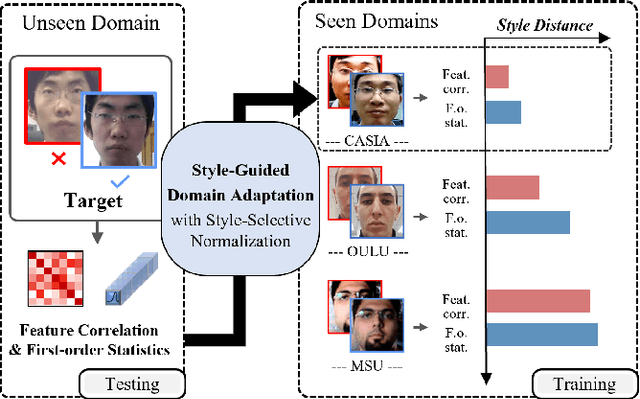

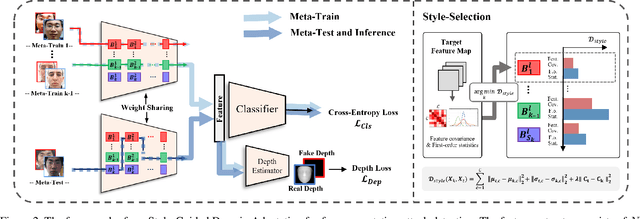

Abstract:Domain adaptation (DA) or domain generalization (DG) for face presentation attack detection (PAD) has attracted attention recently with its robustness against unseen attack scenarios. Existing DA/DG-based PAD methods, however, have not yet fully explored the domain-specific style information that can provide knowledge regarding attack styles (e.g., materials, background, illumination and resolution). In this paper, we introduce a novel Style-Guided Domain Adaptation (SGDA) framework for inference-time adaptive PAD. Specifically, Style-Selective Normalization (SSN) is proposed to explore the domain-specific style information within the high-order feature statistics. The proposed SSN enables the adaptation of the model to the target domain by reducing the style difference between the target and the source domains. Moreover, we carefully design Style-Aware Meta-Learning (SAML) to boost the adaptation ability, which simulates the inference-time adaptation with style selection process on virtual test domain. In contrast to previous domain adaptation approaches, our method does not require either additional auxiliary models (e.g., domain adaptors) or the unlabeled target domain during training, which makes our method more practical to PAD task. To verify our experiments, we utilize the public datasets: MSU-MFSD, CASIA-FASD, OULU-NPU and Idiap REPLAYATTACK. In most assessments, the result demonstrates a notable gap of performance compared to the conventional DA/DG-based PAD methods.
ACNet: Mask-Aware Attention with Dynamic Context Enhancement for Robust Acne Detection
May 31, 2021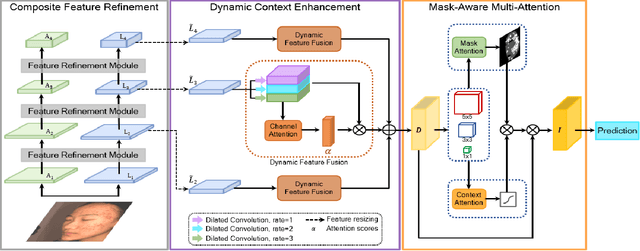

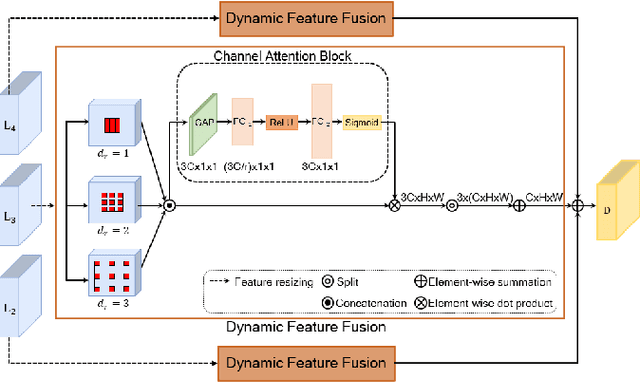
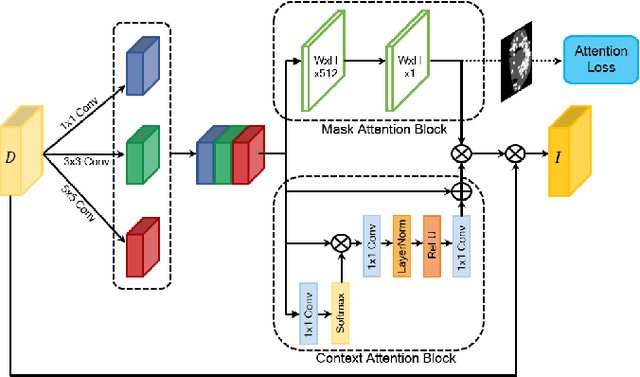
Abstract:Computer-aided diagnosis has recently received attention for its advantage of low cost and time efficiency. Although deep learning played a major role in the recent success of acne detection, there are still several challenges such as color shift by inconsistent illumination, variation in scales, and high density distribution. To address these problems, we propose an acne detection network which consists of three components, specifically: Composite Feature Refinement, Dynamic Context Enhancement, and Mask-Aware Multi-Attention. First, Composite Feature Refinement integrates semantic information and fine details to enrich feature representation, which mitigates the adverse impact of imbalanced illumination. Then, Dynamic Context Enhancement controls different receptive fields of multi-scale features for context enhancement to handle scale variation. Finally, Mask-Aware Multi-Attention detects densely arranged and small acne by suppressing uninformative regions and highlighting probable acne regions. Experiments are performed on acne image dataset ACNE04 and natural image dataset PASCAL VOC 2007. We demonstrate how our method achieves the state-of-the-art result on ACNE04 and competitive performance with previous state-of-the-art methods on the PASCAL VOC 2007.
 Add to Chrome
Add to Chrome Add to Firefox
Add to Firefox Add to Edge
Add to Edge